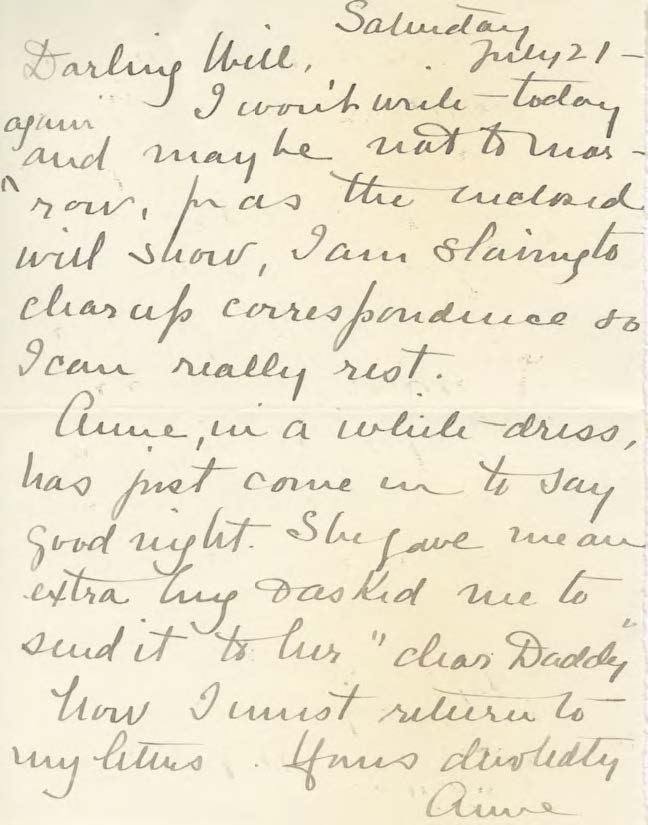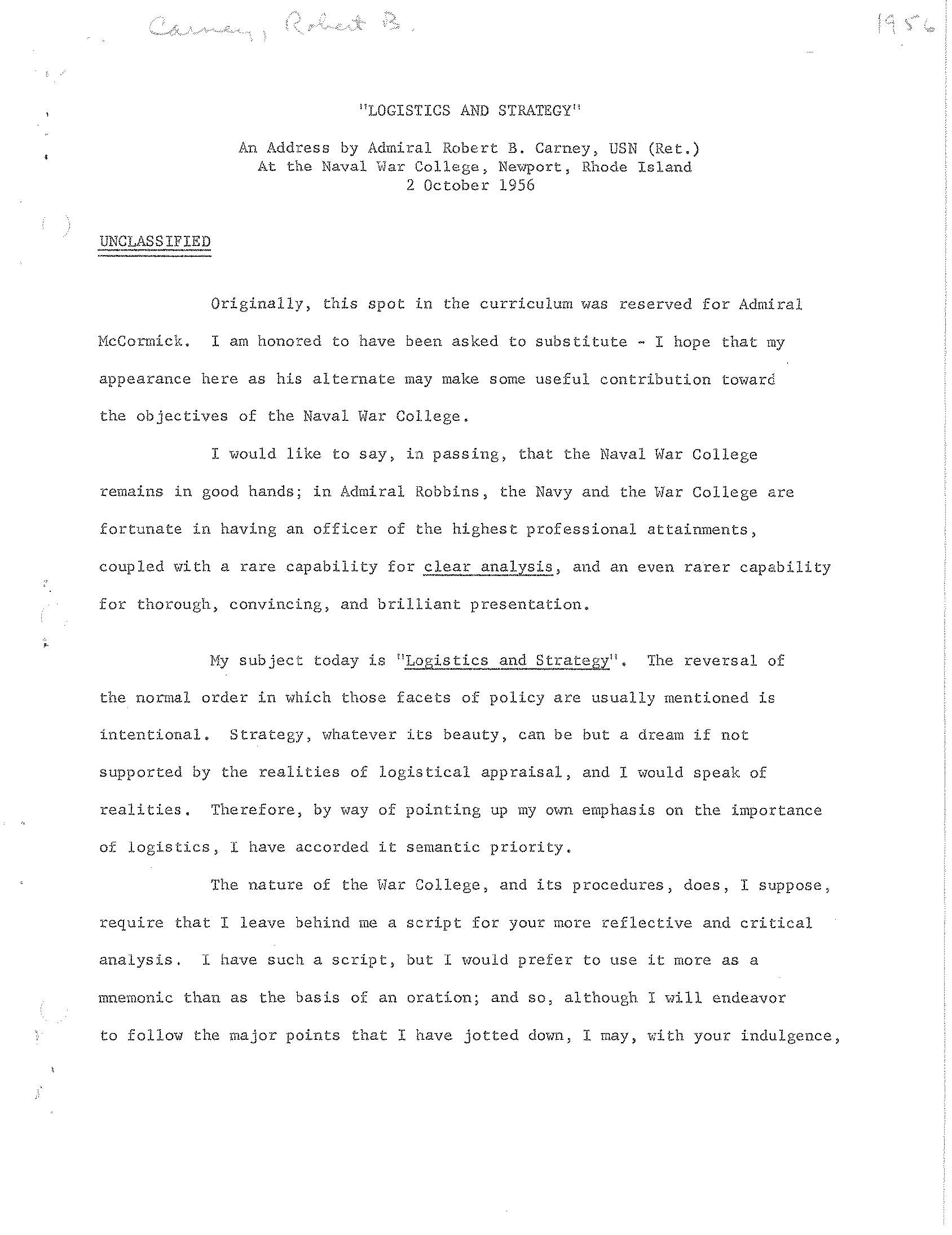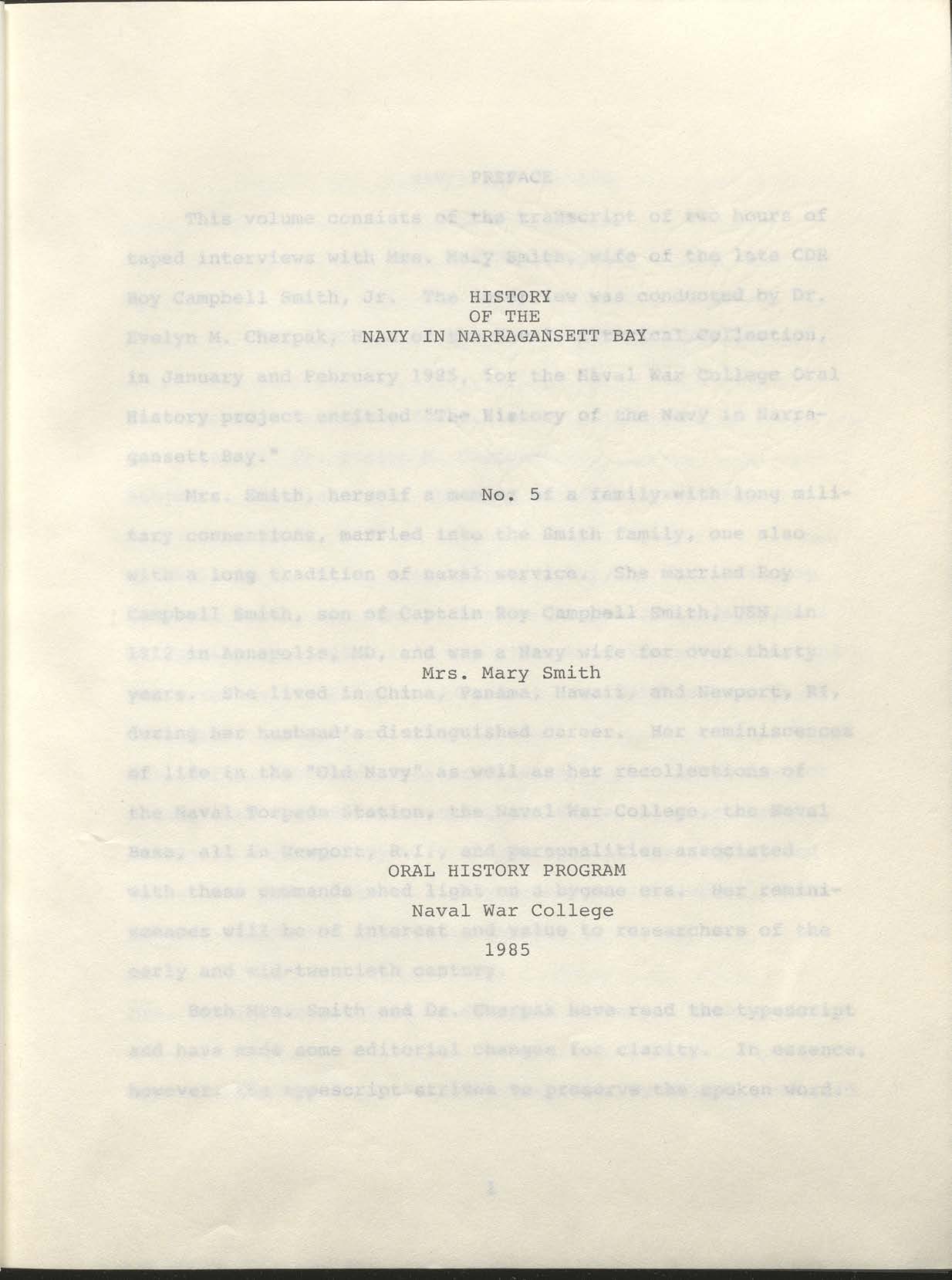Showing Records: 11 - 20 of 45
Krulak, Victor H.: Tactics and Techniques of Insurgency and Counterinsurgency, 1962 Jun 4
Krulak, Victor H.: The Development of the U.S. Counterinsurgency Policy and Doctrine, 1963 Apr 22
Krulak, Victor H.: The Development of the U.S. Counterinsurgency Policy and Doctrine, 1963 Dec 11
Letters sent to Anne H. Sims, 1917 Jul 13-Sep 14
This folder consists of five typescript transcriptions of letters written by William S. Sims to his wife, Anne Hitchcock Sims while he was overseas in London and Paris during World War I. In these letters Sims provided brief updates on his activities and often lamented on how much his loves and misses his wife and family.
Letters sent to William S. Sims, 1917 Jun 19-Jul 23
This folder contains five letters, including typed transcriptions of each, written by Anne Hitchcock Sims to her husband William S. Sims while he was overseas during World War I. In these letters, Anne recounted her and their children's daily activities and plans.
Also included are typed transcriptions of each letter. It is not apparent who prepared the transcriptions.

Letters sent to William S. Sims from Anne Hitchcock Sims

Logistics and Strategy by Robert B. Carney
Marion, Professor: Homing Pigeons for Sea Services, 1896 Jul 20
Transcript of a lecture delivered by Professor Henri H. Marion, US Naval Academy at the Naval War College. The lecture discusses historical uses of pigeons as "war messengers," primarly to transmit intelligence between ship and shore, including a successful pigeon communication programs in France, Belgium, and Portugal. He concludes the lecture with a summary of pigeon experiments at USNA, and expresses hope that Congress will support a pigeon breeding and experiment station.
Mary A Smith: History of the Navy in Narragansset Bay oral history transcription, 1985
Smith, Larry 1892-1987. Reminiscences of her youth and life as a Navy wife, including growing up in Annapolis on the grounds of the U.S. Naval Academy, social life with midshipmen, marriage, World War I, life in Shanghai and Chefoo, China, and travel to Manila, 1925-1928; Assignment to the Naval Torpedo Station, Newport, R.I., and comments on the Naval War College in the 1930s; Impressions of Admirals W. T. Sampson, W. Rodgers,]. P. Pringle, T. Hart, R. A. Spruance, E. G. Kalbfus and CAPT R. C. Smith; Assignment to Hawaii; Retirement in Newport, R.I., 1940. Part of History of the Navy in Narragansett Bay Project.

